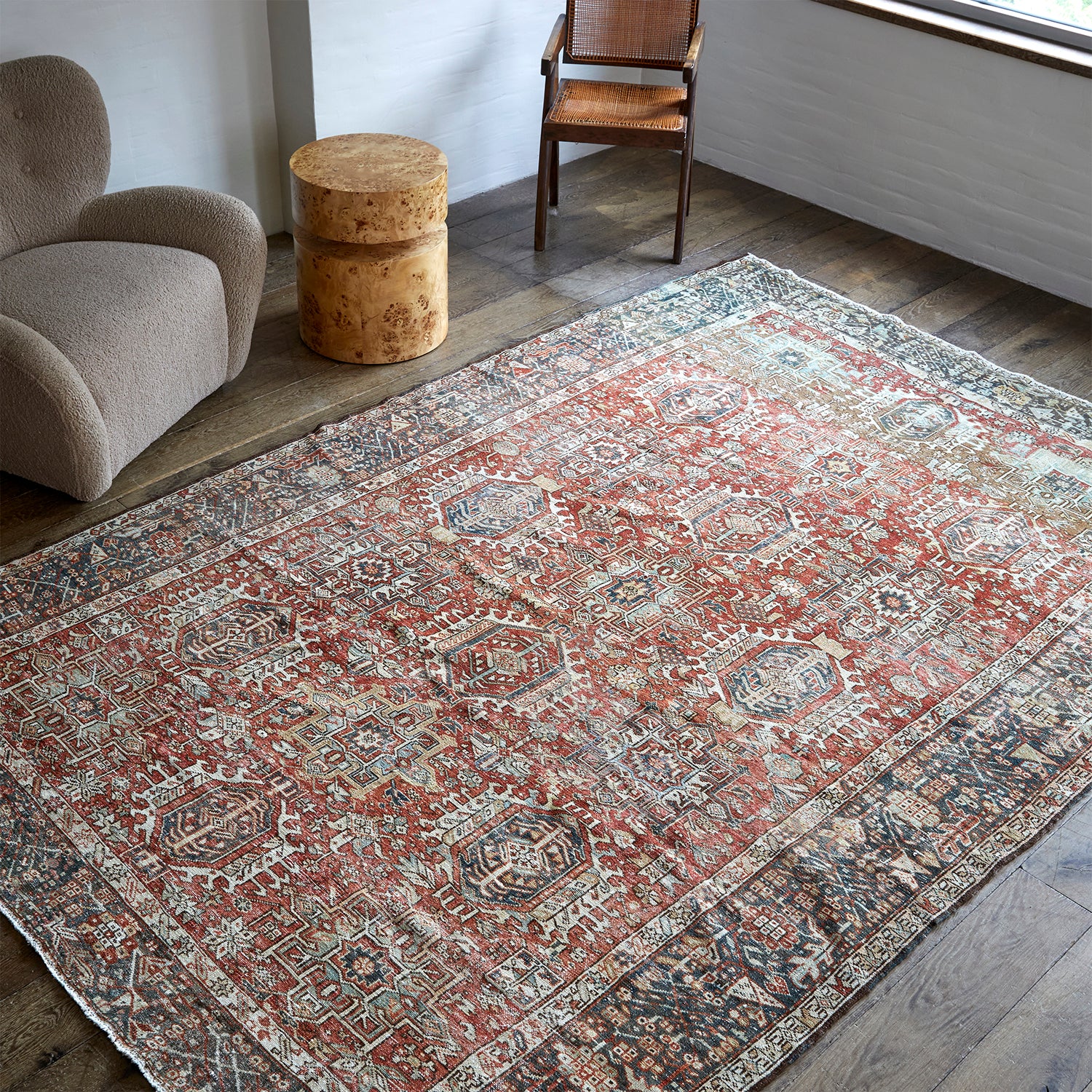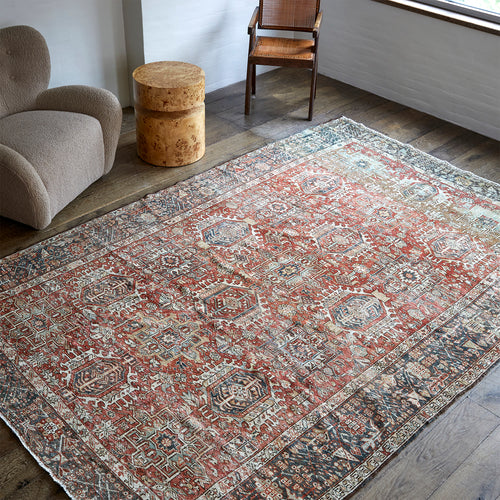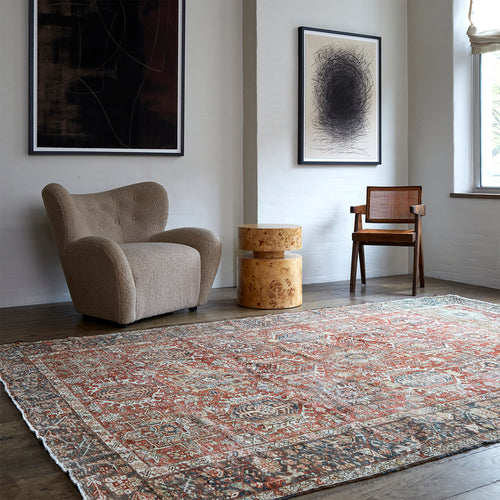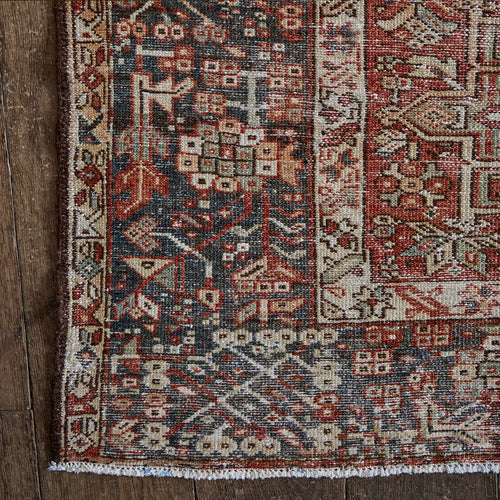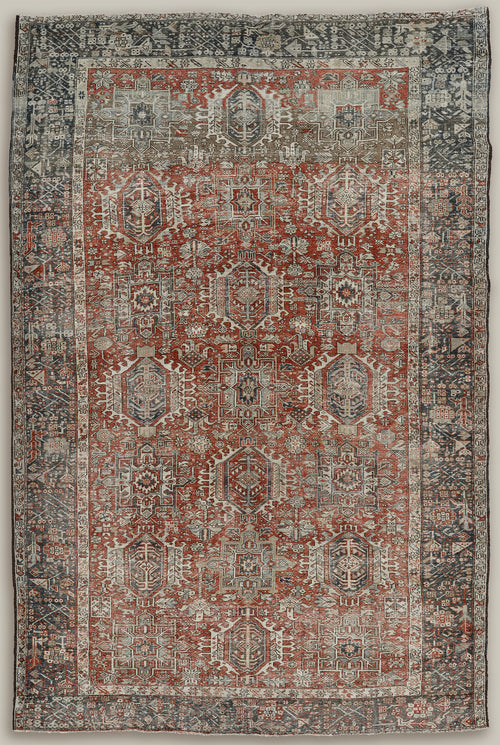Vintage 1960's Northwest Persia Heriz rug - 7'4" x 10'10"
The city of Heriz is located roughly 60 miles from the legendary carpet-producing city of Tabriz. Since the early 19th century, Heriz has been producing European-sized carpets that define the angular style of northwest Persian rugs. Heriz rugs are known for having glorious color, with rich reds, blues, greens, and yellows. Much of the formal vocabulary, drawing, and color sensibility of these rugs is traceable to the classical antique Caucasian rugs of the eighteenth and seventeenth centuries. circa 1960


